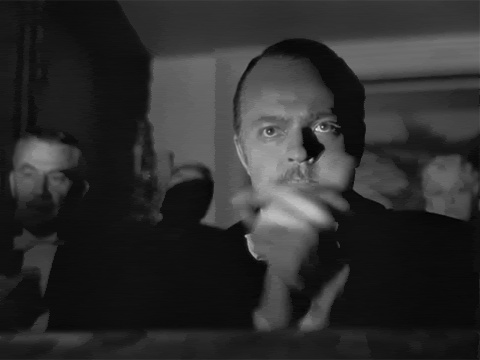- 29 Sep 10, 22:50#217845
I know we've had several discussions about how bad those tilke-tracks are, but i would like to take a different aproach and try to understand why they are so bad.
I am studying architecture in Munich and graphic design is another longtime hobby i am very interrested in. So naturally, my point of view will be a bit artistic.
I have a theory that a good track has got a layout that is also a beautiful sign. You could look at it as if it would be logotype. A feature every Logotype should have is recognition value. One could already name some of the new tracks that already fail in that point and don't have any recognition value whatsoever. Bahrain, Singapore and Valencia comes to my mind in particular.
One way to achieve a good recognition value is simplicity as every graphic designer would tell you. Most of the new circuits are overly complicated and that derogates them a lot. Monza and the old Hockenheim score big in that respect. Sometimes less is more and it is quite remarkable how much can be achieved with so little. In architectural terms speaking i would compare those tracks to Bauhaus - beautiful in its functional simplicity
Spa on the other hand is much more sophisticated. Every additional squiggle is like a decoration, but with structural integrity to the whole. It has a very organic feel which helps it to fit so beautifully in its surroundings. This is the architecture of Nature (God). Its beauty comes from variety and apparent imperfection. The closest comparable man-made creation that comes to my mind is the architecture of Gaudi or Art Nouveau.
Back to the new tracks. Shanghai, Yas Marin, Sepang and Istanbul are all tracks that all have a pretty good recognition value. But what spoils their potential success is a strange artificial feel. I assume from this, that Tilke as many others is an architect that works computer-aided from the earliest stages of the design process. And it shows. Believe me or not, there is just no substitution for good old scribbling. This is also one of the reasons why modern architecure has failed in the eyes of many.
Just grab a pencil and try to draw over the layout of a circuit and you will feel the difference between a good and bad track immediately. Suzuka is a very good synergy of man-made precision and natural grace. The japanese were always pretty good at this, including architects and i really believe Suzukas resemblence to a caligraphic sign is no coincidence.
If i had to pick modern tracks that come closest to the authentic feel of classic tracks, i would go for Istanbul and Sepang. They are actually beautiful signs, but if you look a bit closer you find some rough edges that can't hide its origin. I think those two out of the modern tracks are also most popular with the drivers. It may well take just a brush or pencil to smooth out those edges. It's a pitty Tilke can't handle those tools.
PS: Sorry for the flawed english.
I am studying architecture in Munich and graphic design is another longtime hobby i am very interrested in. So naturally, my point of view will be a bit artistic.
I have a theory that a good track has got a layout that is also a beautiful sign. You could look at it as if it would be logotype. A feature every Logotype should have is recognition value. One could already name some of the new tracks that already fail in that point and don't have any recognition value whatsoever. Bahrain, Singapore and Valencia comes to my mind in particular.
One way to achieve a good recognition value is simplicity as every graphic designer would tell you. Most of the new circuits are overly complicated and that derogates them a lot. Monza and the old Hockenheim score big in that respect. Sometimes less is more and it is quite remarkable how much can be achieved with so little. In architectural terms speaking i would compare those tracks to Bauhaus - beautiful in its functional simplicity
Spa on the other hand is much more sophisticated. Every additional squiggle is like a decoration, but with structural integrity to the whole. It has a very organic feel which helps it to fit so beautifully in its surroundings. This is the architecture of Nature (God). Its beauty comes from variety and apparent imperfection. The closest comparable man-made creation that comes to my mind is the architecture of Gaudi or Art Nouveau.
Back to the new tracks. Shanghai, Yas Marin, Sepang and Istanbul are all tracks that all have a pretty good recognition value. But what spoils their potential success is a strange artificial feel. I assume from this, that Tilke as many others is an architect that works computer-aided from the earliest stages of the design process. And it shows. Believe me or not, there is just no substitution for good old scribbling. This is also one of the reasons why modern architecure has failed in the eyes of many.
Just grab a pencil and try to draw over the layout of a circuit and you will feel the difference between a good and bad track immediately. Suzuka is a very good synergy of man-made precision and natural grace. The japanese were always pretty good at this, including architects and i really believe Suzukas resemblence to a caligraphic sign is no coincidence.
If i had to pick modern tracks that come closest to the authentic feel of classic tracks, i would go for Istanbul and Sepang. They are actually beautiful signs, but if you look a bit closer you find some rough edges that can't hide its origin. I think those two out of the modern tracks are also most popular with the drivers. It may well take just a brush or pencil to smooth out those edges. It's a pitty Tilke can't handle those tools.
PS: Sorry for the flawed english.

 Hi, I'm Kai, i'm 23 and i'm a real Nerd when it comes to F1. Watch every session, on multiple screens, live telemetry obviously, live commentry, 5live radio in one ear, poor legard in the other (one finger is always close to the mute button). So there you go, it looks ridiculous when i watch F1, but i don't care because i love it. Actually, i can't consider myself a real nerd, because i don't know really that much about the techy stuff, but at least i have got some basics covered with downforce, grip etc. Came here, because german forums are boring and i find people on english forums more knowledgable and also enthusiastic. So there you go.
Hi, I'm Kai, i'm 23 and i'm a real Nerd when it comes to F1. Watch every session, on multiple screens, live telemetry obviously, live commentry, 5live radio in one ear, poor legard in the other (one finger is always close to the mute button). So there you go, it looks ridiculous when i watch F1, but i don't care because i love it. Actually, i can't consider myself a real nerd, because i don't know really that much about the techy stuff, but at least i have got some basics covered with downforce, grip etc. Came here, because german forums are boring and i find people on english forums more knowledgable and also enthusiastic. So there you go.




 ???
???